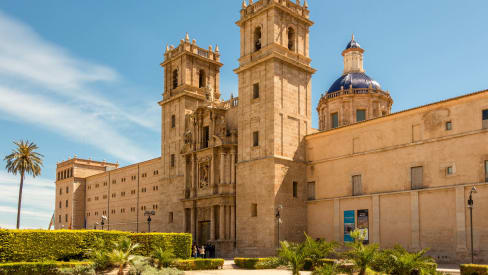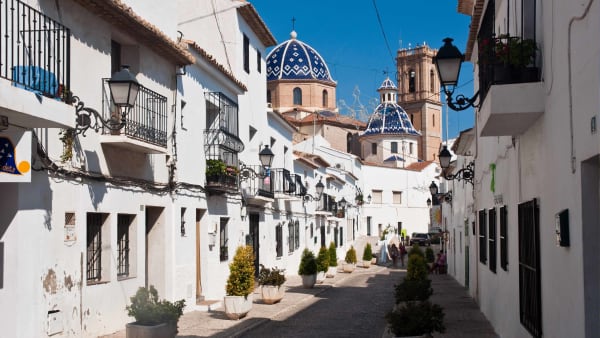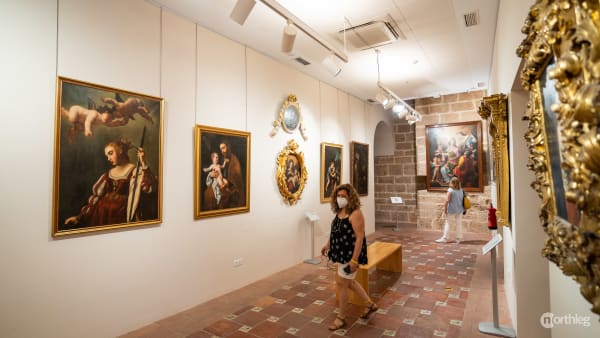Renaissance Treasures in Valencia
Immerse yourself in 15th and 16th-century Valencia through its majestic Renaissance architecture and art.
Renaissance Treasures in Valencia
Immerse yourself in 15th and 16th-century Valencia through its majestic Renaissance architecture and art.
Symmetry and harmony. These are the principles you’ll notice in Valencia’s Renaissance pieces, their columns, domes, and façades. Although buildings here tend to integrate more than one style, it’s clear that the Renaissance period left its mark in Valencia.
The type of Renaissance sensibility that took hold the most in Valencia was the High Renaissance variety. As such, architects and artists were mainly concerned with creating harmonious and balanced pieces. The works put simplicity and classic shapes at the forefront. The decoration was very austere and not exaggerated.
In Valencian Renaissance architecture, you’ll see great use of clean lines, symmetrical constructions, and lots of columns. Altogether, these elements give the buildings an air of purity that evokes Roman and Greek antiquity.
Convent of Santo Domingo
The construction of the Santo Domingo convent began in the 13th century and continued for hundreds of years after that. The building presents a mixture of styles: Gothic, Renaissance, Baroque, and Neoclassical.

The most notable pieces from the Renaissance period are the Salón del Trono, the church entry façade, and the small cloister known as Patio Toscano. In the Capilla de los Reyes, you’ll also find a beautiful Renaissance altarpiece in gilded wood
Museu de Belles Arts
The Museu de Belles Arts (Museum of Fine Arts), which houses about 2,000 works, is the second largest art gallery in all of Spain. It mainly comprises works from the 14th to the 17th century, thus including numerous Renaissance pieces.

Both Spanish and international works appear in the museum. Among the featured names, you’ll find Juan de Joanes, El Greco, Van Dyck, Pinturicchio, Piranesi, del Sarto, Goya and Velázquez.
Monasterio de San Miguel de los Reyes
San Miguel de los Reyes is a massive, castle-like monastery just north of Valencia’s centre. It is actually considered to be an extremely influential piece in Valencian Renaissance. In fact, San Miguel de los Reyes is thought to be a prototype for the famous Escorial royal palace.

The complex was built in the 16th century around a 14th-century Gothic monastery, following architectural criteria of the time. As a result, all the additions to the building are distinctly Renaissance: entire pavilions, the majority of the façade, some cloisters, and the altarpieces follow the same taste.
Iglesia de la Santa Cruz
The Iglesia de la Santa Cruz (Church of the Holy Cross), once part of the Real Monasterio de Nuestra Señora del Carmen, is popularly referred to as Iglesia del Carmen.
The monastery, which gave its name to the Carme neighbourhood, integrates more styles in its architecture. Most notably, there are a Gothic cloister and a Renaissance one, as well as the Mannerist façade facing Plaza del Carmen.

The Renaissance cloister can be found on the west side of the convent and was built in the 16th century. It presents a square floor plan and two orders of arches resting on columns. In a typically Renaissance manner, the decoration is quite austere, but extremely elegant nonetheless.
Iglesia de Corpus Christi
The Real Colegio Seminario del Corpus Christi, commonly known as Iglesia de Corpus Christi is another great example of the Valencian Renaissance. The building, arranged around a rectangular cloister decorated with marble columns, embodies the taste for classical simplicity and mathematical proportions typical of this period.

Both the interior, entirely decorated with frescoes, and the exterior, where arch galleries stand out, are clearly designed with attention to balance and symmetry.


















